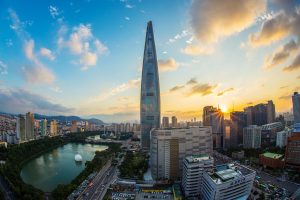“The Korean New Deal is the blueprint for South Korea’s next hundred years,” said President Moon Jae-in as he officially unveiled the Korean New Deal during an address to the nation on July 14.
Drawing an explicit parallel to U.S. President Franklin Roosevelt’s signature program in the 1930s, the Korean New Deal proposes not only a way out of the economic crisis following the COVID-19 pandemic but also a fast track for a nationwide digital transformation and South Korea’s leadership in the post-COVID era. The policy revolves around three pillars – the Digital New Deal, Green New Deal, and strengthening the employment and the social safety nets (which some refer to as the “human” pillar) – with a massive investment of 160 trillion won ($133.1 billion) and the creation of 1.9 million new jobs by 2025.
The Korean New Deal is one of the early medium- to long-term strategies that have come out of the COVID-19 crisis and also certainly one of the most ambitious plans. This article takes a deeper dive into the Korean New Deal, examining the broader context that led to its development and the narratives that Seoul has put forward in connection to its history of rapid economic development and the vision for its middle-power leadership in the post-COVID world.
The Korean New Deal was first announced at the end of April 2020, and it has evolved significantly since then.
According to the announcement by the Finance Ministry on May 7, the Korean New Deal was going to primarily be a digitalization policy, revolving around the three pillars of data infrastructure, “untact” (contactless) economy, and digitalization of social overhead capital. However, Moon announced on May 20 that the Korean New Deal would include a “Green New Deal” component. Reportedly, the cabinet was split about the addition, and Moon had personally pushed for it. In this context, a June 1 announcement outlined the 76 trillion won ($63.3 billion) Korean New Deal, led by the digital and green pillars, which would create 550,000 new jobs.
On July 14, Moon presented the official roadmap of the Korean New Deal, which significantly expanded both the size and the scope of the initiative. According to the latest plan, the government will directly invest 114 trillion won in the Korean New Deal until 2025, which pushes the total investment to 160 trillion won including funding from local governments and the private sector. Overall, the investment is expected to create 1.9 million new jobs by 2025. Also, the new plan inserted “strengthening the employment and social safety nets” as the third pillar of the Korean New Deal along with the Digital and Green New Deals.

































